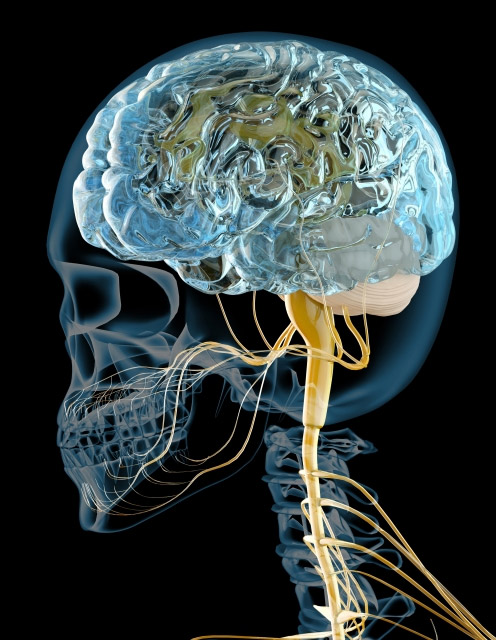News
Overcoming Brain-Nerve Disease: Will Patients Smile Soon? Updated in July 2020
The American movie “Awakenings”* is based on non-fictional true events from 50 years ago. In the story, severe lethargic encephalitis or “sleeping sickness” patients recover dramatically from a new drug called L-Dopa, which is a medication for Parkinson 's disease. However, patients gradually returned to their original state because the medicine’s effect wore off.
Note: “Awakenings” U.S. release 1990; Directed by Penny Marshall; Starring Robert De Niro and Robin Williams
I can never forget the strong impact from this film. More than 30 years ago, a professor of medicine at a university in Mexico City had published results on transplanting part of adrenal tissue to a Parkinson’s patient's own brain. This took place only four or five years ago before the release of the film in the U.S. Despite the difference in the method of treatment, the fact that several patients had dramatically recovered was exactly like the storyline in the film. Parkinson's disease occurs when neurotransmitter dopamine is no longer secreted into the brain. According to the professor, the adrenal gland transplanted into the brain did secrete dopamine, and the patient who was confined to a wheelchair recovered to the extent of throwing a ball and playing catch with his child.

How was he able to hear such results directly from the professor in Mexico? When I was stationed in Washington D.C., I was interviewing a doctor from the U.S. At the end of the interview, he told me that "a paper from Mexico will soon be published in a prominent American medical magazine soon." Upon hearing this, I travelled all the way to Mexico City to meet him.
There is another common factor between the movie “Awakenings” and my experience. L-Dopa used for patients in the film is a precursor to dopamine. It turns into dopamine when L-Dopa enters the brain, and is taken in by the dopamine nerve. Dopamine is secreted from dopamine cells to alleviate symptoms. However, its effect on Parkinson’s patients was only temporary. Later, when I asked the professor who informed me of the treatment in Mexico, the reply was that patients in Mexico did not seem to experience prolonged effects.
Transplanting adrenal gland parts into a patient's brain had not become an established method of treatment. After that, I never heard anything about such treatments. L-Dopa is still used as a prime medicine to treat Parkinson 's disease. However, it is not a definite therapeutic agent. One shortcoming is that after taking the medicine, it does not stay in the bloodstream for long. When the symptoms are light, dopamine is stored in the minute parts of the dopamine nerve and the effect lasts longer. However, when the disease progresses, the ability to store dopamine declines, and the symptoms come back before taking the next dose of medication. Furthermore, symptoms like arbitrary spasm-like limb movements become prominent.
If dopamine is the neurotransmitter, why not take dopamine itself?─some people may suggest. Unfortunately, that is not possible due to the structure of the human body. In our body, there is a blood brain barrier. The blood brain barrier is a defense mechanism to prevent harmful substances from entering the brain. On the other hand, it prevents drugs from entering into the brain from the bloodstream, making it a major obstacle in developing treatments for brain disease. Besides dopamine, many attempts to send therapeutic drugs to the brain have been made so far, but none have succeeded.
On November 1, a press conference was held at Tokyo Medical and Dental University (TMDU). A TMDU Bio-venture named Braizon Therapeutics headed by CEO Dr. Mariko Tosu revealed an ambitious business plan featuring a new drug-delivery technique to break the blood brain barrier. The project will be conducted in collaboration with domestic and overseas pharmaceutical companies to develop therapeutic drugs for brain-nerve diseases. The venture aims to conduct clinical trials of new drugs within 5-8 years. A new method to break through the blood brain barrier is based on the mechanism that glucose required by the brain is in fact, taken into the brain through blood. It is already recognized as a patent in Japan.
Besides TMDU President Dr. Yasuyuki Yoshizawa, relevant professors from TMDU and University of Tokyo also joined the press conference to demonstrate their commitment.
In addition to Parkinson's disease, there are many brain-nerve diseases awaiting development of fundamental therapeutic drugs. Among them are dementia including Alzheimer's disease which will increases with the aging population, amyotrophic lateral sclerosis (ALS), brain tumor, depression, schizophrenia and many others. As of 2015, it is estimated that there are 46.9 million dementia patients in Japan alone and it is estimated to surpass 130 million by 2050.
Waves of aged population may spread from Japan throughout Asia. The challenge of Japanese bio-venture would be an eye-catching issue for other countries, too. (T.K)
Koiwai Tadamichi
Public Relations Advisor
China Research and Sakura Science Center
Japan Science and Technology Agency







